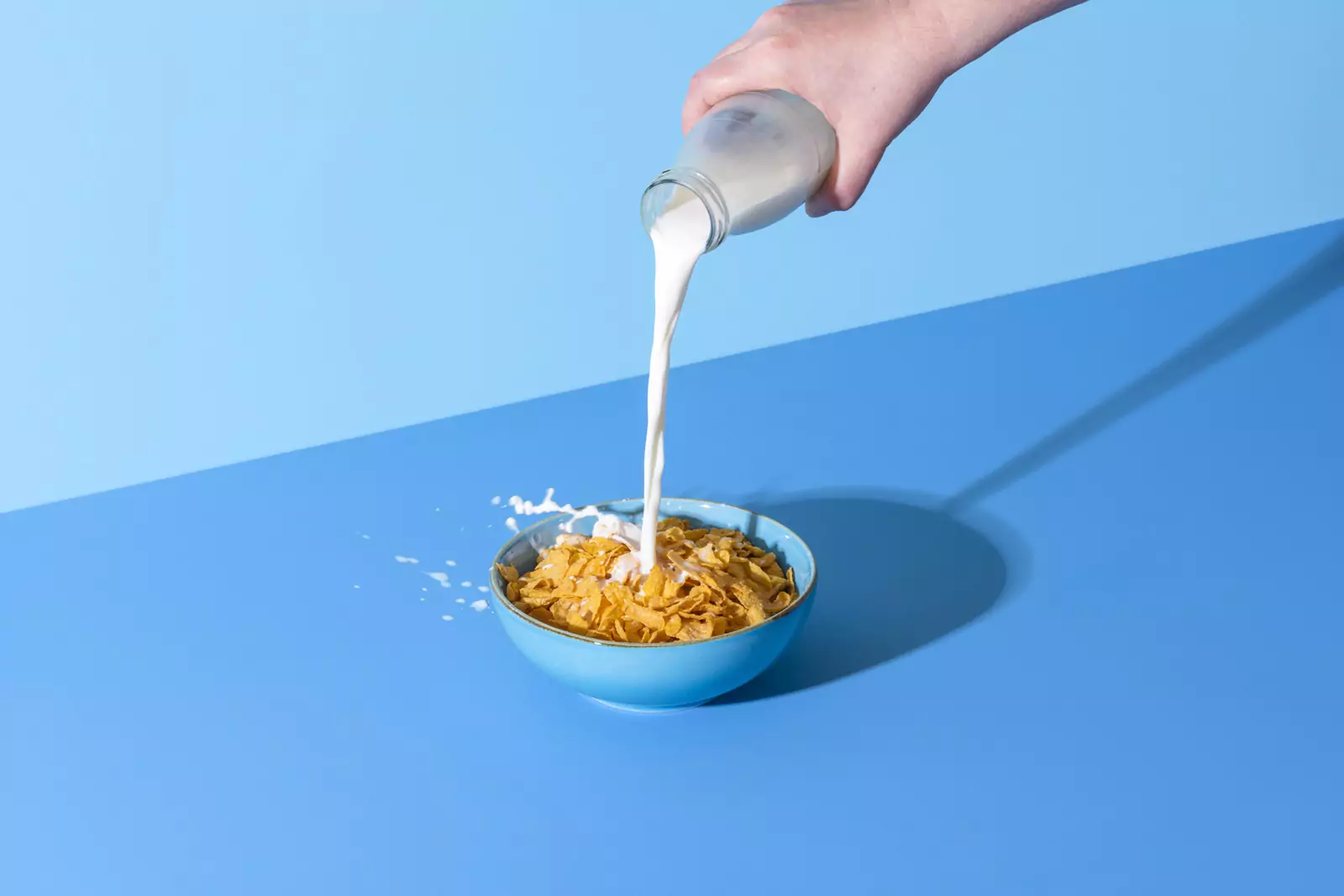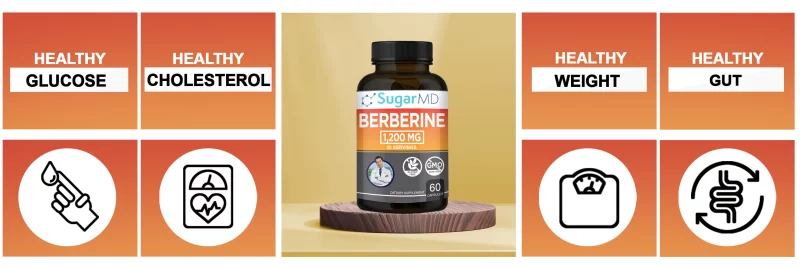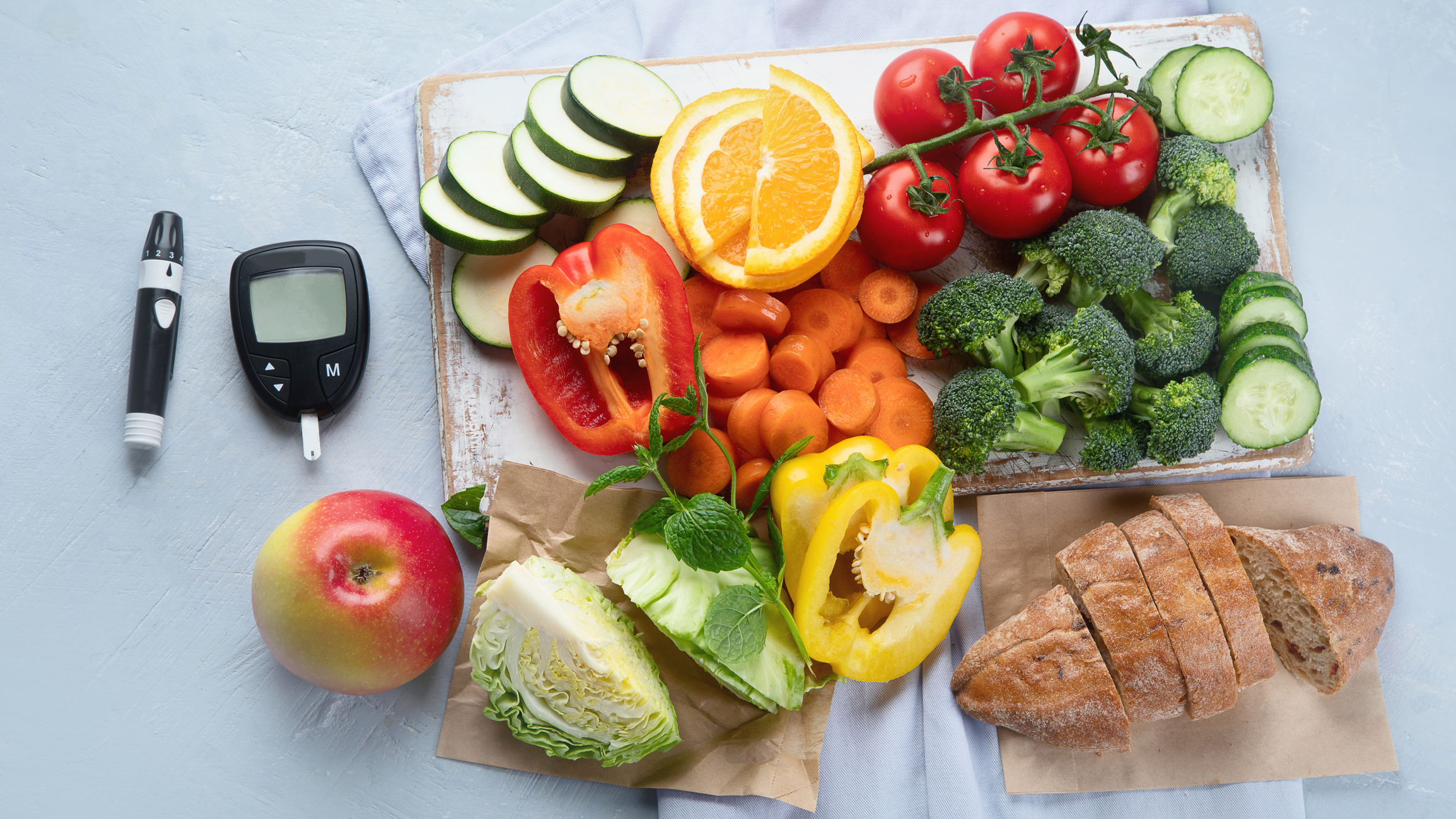





What Kind of Cereal Can a Diabetic Eat?


Table of Contents
- The Importance of Breakfast for Diabetics
- Blood Sugar Levels in the Morning
- Risk of Developing Type 2 Diabetes
- Risk of Heart Disease
- Understanding Nutritional Labels
- Reading the Nutritional Label
- Grams of Sugar
- Added Sugar
- Glycemic Index (GI)
- Types of Cereals to Avoid
- Cereals with Dried Fruit
- High Sugar Cereals
- Cereals with Low Fiber
- Cereals with Wheat Flour
- What Kind of Cereal Can a Diabetic Eat
- Bran Flakes
- Steel Cut Oats
- Healthy Cereal Choices
- Cold Breakfast Cereals
- Grocery Store Guide for Diabetics
- Where to Find Healthy Cereals
- Diabetes-Friendly Brands
- Grocery Store Layout
- Online Shopping Tips
- Additional Tips for a Balanced Diet
- Eating Breakfast Regularly
- Other Healthy Meal Options
- Exercise and Diet
- Incorporate SugarMDs Super Berberine
- Conclusion
- About The Author
Breakfast—the most important meal of the day they say. But if you're living with diabetes, you might find yourself asking, "What kind of cereal can a diabetic eat?" It's a crucial question because the wrong choice can send your blood sugar levels skyrocketing. This article aims to be your go-to guide for navigating the cereal aisle, whether you're at your local grocery store or scrolling through an online shopping app.
We'll delve into the nitty-gritty of nutritional labels, helping you decode those confusing terms like "grams of sugar" and "glycemic index." We'll also guide you through the types of cereals you should steer clear of and introduce you to some diabetes-friendly options that don't compromise on taste.
And hey, we'll even take a virtual tour of a grocery store to help you make informed choices. So, buckle up and get ready to become a cereal connoisseur who knows how to keep those blood sugar levels in check!
The Importance of Breakfast for Diabetics
You've probably heard it a thousand times: "Breakfast is the most important meal of the day." But when you're a diabetic, this old adage takes on a whole new level of significance. Skipping breakfast can lead to erratic blood sugar levels, making it harder to manage your diabetes throughout the day.
Eating breakfast, especially a healthy one, sets the tone for stable blood glucose levels and provides the energy you need to kickstart your day. It's not just about filling your stomach; it's about setting a metabolic pace that your body can comfortably follow.
Blood Sugar Levels in the Morning
Morning time is a critical period for anyone with diabetes. Ever heard of the "dawn phenomenon"? It's a natural rise in blood sugar levels that occurs in the early morning hours. This is your body's way of preparing for the day ahead.
However, for people with diabetes, this can result in elevated blood sugar levels. A balanced breakfast can counteract this phenomenon. Choosing the right kind of cereal, one that's low in sugar and high in fiber, can help stabilize your blood glucose levels and prevent spikes that could ruin your day.
Risk of Developing Type 2 Diabetes
Let's talk numbers for a second. Did you know that regularly skipping breakfast is associated with a higher risk of developing Type 2 diabetes? A study showed that people who skipped breakfast had a 21% higher risk of developing Type 2 diabetes compared to those who had breakfast regularly.
The connection lies in the erratic blood sugar levels and insulin sensitivity that come from prolonged fasting. So, eating breakfast is not just a lifestyle choice; it's a preventive measure.
Risk of Heart Disease
If the risk of developing Type 2 diabetes isn't convincing enough, consider this: skipping breakfast is also linked to a higher risk of heart disease. When you skip breakfast, you're more likely to indulge in high-calorie, high-sugar snacks later in the day.
This pattern can lead to weight gain, increased cholesterol levels and elevated blood pressure—all risk factors for heart disease. A diabetes-friendly cereal option can provide the nutrients you need without the added sugar, helping you maintain a heart-healthy diet.
Understanding Nutritional Labels
Reading the Nutritional Label
When it comes to managing diabetes, knowledge is power. One of the first steps in understanding what kind of cereal a diabetic can eat is learning how to read nutritional labels. These labels are your roadmap to making healthier choices.
They tell you exactly what's in the box—no guesswork needed. You'll find information on calories, fats, protein and most importantly for diabetics, carbohydrates and sugar. Knowing how to interpret these numbers can make a significant difference in your blood glucose levels.
Grams of Sugar
Sugar is the main culprit when it comes to elevated blood sugar levels. On a nutritional label, you'll find sugar listed under carbohydrates. Pay close attention to the grams of sugar per serving. The lower the better.
But remember, even cereals that claim to be "sugar-free" can sometimes contain other forms of sugar like honey or corn syrup. Always read the ingredients list to make sure you're not being fooled by clever marketing.
Added Sugar
Added sugar is another tricky component. It's sugar that's added during the processing of the food, separate from the naturally occurring sugars in fruits or grains. On the nutritional label, you'll often see it listed separately.
This is crucial information for people with diabetes. Added sugar can quickly spike your blood glucose levels, so it's best to opt for cereals that have little to no added sugar.
Glycemic Index (GI)
Last but not least, let's talk about the Glycemic Index (GI). This is a measure of how quickly a food causes your blood sugar to rise. Foods with a high GI are rapidly absorbed and cause quick spikes in blood sugar levels. On the other hand, foods with a low GI are absorbed more slowly and result in a gradual increase in blood sugar.
While the GI isn't usually listed on the nutritional label, it's worth doing a quick search to find out where your chosen cereal stands. Opting for a low-GI cereal can help you maintain more stable blood glucose levels throughout the day.
Types of Cereals to Avoid
Cereals with Dried Fruit
Dried fruit might seem like a healthy addition to your morning bowl but for diabetics, it can be a hidden landmine. Dried fruits are concentrated sources of sugar and can significantly elevate your blood glucose levels.
When you're scanning the cereal aisle, it's easy to be lured by the colorful boxes boasting of fruit-filled goodness. However these cereals often contain more sugar than you'd expect, making them less than ideal for people with diabetes.
High Sugar Cereals
Sugar is the arch-nemesis of stable blood sugar levels. High sugar cereals are among the worst options for diabetics. They can cause rapid spikes in blood glucose levels, leading to a cycle of highs and lows that can be hard to manage.
Even cereals that are marketed as "healthy" or "natural" can be high in sugar. Always check the nutritional label for grams of sugar per serving. If the sugar content is high, it's best to leave that box on the shelf.
Cereals with Low Fiber
Fiber is your friend when it comes to managing diabetes. It slows down the absorption of sugar, helping to stabilize blood sugar levels. Cereals low in fiber are less effective at this, making them a poor choice for diabetics.
When you're reading the nutritional label, look for cereals that have a high fiber content. If the fiber content is low, that's a red flag. Remember, a cereal option that's high in fiber is generally a better choice for maintaining stable blood glucose levels.
Cereals with Wheat Flour
Wheat flour is another ingredient to be cautious of. Many cereals contain refined wheat flour which has a high glycemic index (GI). This means it can quickly raise your blood sugar levels. Whole grain or whole wheat is a better option as they have a lower GI and are more slowly absorbed into the bloodstream.
So, when you're deciding what kind of cereal a diabetic can eat, be sure to check the ingredients list for the type of flour used.
What Kind of Cereal Can a Diabetic Eat
Bran Flakes
When it comes to diabetes-friendly cereals, bran flakes are often at the top of the list. They are high in fiber and low in sugar, making them an excellent choice for stabilizing blood glucose levels. The fiber content slows down the absorption of sugar which helps to prevent spikes in your blood sugar.
Plus, bran flakes are readily available in most grocery stores, making them a convenient option. Just make sure to check the nutritional label for any added sugar or other ingredients that might not be diabetes-friendly.
Steel Cut Oats
Steel cut oats are another stellar option for people with diabetes. Unlike instant oats which can have a higher glycemic index, steel cut oats have a lower GI and are absorbed more slowly into the bloodstream. This helps maintain more consistent blood sugar levels throughout the morning.
They're also versatile; you can add a variety of toppings like nuts or low-GI fruits to make your breakfast more interesting. However, portion control is key. Too much of even a good thing can lead to elevated blood sugar levels.
Healthy Cereal Choices
So, what are some other healthy cereal choices for diabetics? Look for cereals that are high in fiber and protein but low in added sugar and sodium. Some good options include cereals made from whole grains, such as whole-grain barley or quinoa cereals.
These options not only help manage blood sugar but also provide essential nutrients like vitamins and minerals. Remember the key is to read the nutritional label carefully. Even cereals that seem healthy at first glance can contain hidden sugars or high levels of sodium.
Cold Breakfast Cereals
If you're a fan of cold breakfast cereals, you're in luck. There are several cold cereal options that are suitable for people with diabetes. Look for cereals that list whole grains as the first ingredient and have at least 3 grams of fiber per serving.
Also, be cautious of cereals that are marketed as "low-fat" as they often compensate by adding extra sugar. Always double-check the nutritional label to ensure you're making a diabetes-friendly choice.
Grocery Store Guide for Diabetics
Where to Find Healthy Cereals
Navigating the grocery store can be a daunting task when you're trying to figure out what kind of cereal a diabetic can eat. But don't worry, we've got you covered. Healthy cereals are often found in the "natural" or "organic" sections of the store.
Sometimes they're also placed alongside regular cereals but are usually on the higher or lower shelves, not at eye level. Keep an eye out for labels that indicate high fiber and low sugar content. These are usually your best bets for diabetes-friendly options.
Diabetes-Friendly Brands
Brands matter when it comes to choosing a cereal that's good for diabetics. Some brands specialize in health foods and offer cereals that are high in fiber, low in sugar and made from whole grains.
Always read the nutritional label, even if the brand is known for being healthy, to ensure it meets your specific dietary needs.
Grocery Store Layout
Understanding the layout of your grocery store can save you both time and effort. Stores are often designed to place essential items like fruits, vegetables and dairy products around the perimeter. This is where you'll also usually find whole-grain bread and sometimes even a section dedicated to diabetes-friendly foods.
The middle aisles often contain processed foods, including cereals. When you venture here, stick to your list and avoid impulse buys, especially those high in added sugar or low in fiber.
Online Shopping Tips
If you prefer shopping online there are plenty of ways to find diabetes-friendly cereals from the comfort of your home. Use the search function to look for cereals that meet your criteria, such as "high fiber cereals" or "low sugar cereals."
Read customer reviews to get an idea of taste and texture, as these can vary widely. Also, take advantage of online tools that allow you to compare nutritional information side by side. Just like in physical stores, always read the nutritional label and ingredient list before making a purchase.
Additional Tips for a Balanced Diet
Eating Breakfast Regularly
While we've focused on what kind of cereal a diabetic can eat, it's essential to remember that eating breakfast regularly is a cornerstone of a balanced diet. Skipping breakfast can lead to erratic blood sugar levels and may increase the risk of developing Type 2 diabetes.
A consistent breakfast routine not only helps regulate blood glucose levels but also aids in weight management, another critical factor for diabetics.
Other Healthy Meal Options
Cereal isn't the only breakfast option for diabetics. There are plenty of other healthy meal choices that can help maintain stable blood sugar levels. For instance, scrambled eggs with spinach and a slice of whole-grain toast can be a nutritious start to the day.
Smoothies made with low-GI fruits and protein powder are another good option. The key is to balance carbohydrates, proteins and healthy fats to ensure a steady release of energy throughout the morning.
Exercise and Diet
Diet alone isn't enough to manage diabetes effectively; exercise plays a crucial role too. Physical activity helps improve insulin sensitivity, allowing your body to use insulin more efficiently. This, in turn, helps regulate blood sugar levels.
Whether it's a brisk walk after breakfast or a more intense workout routine, incorporating exercise into your daily life can make a significant difference in managing diabetes.

Incorporate SugarMDs Super Berberine
Last but not least, consider incorporating SugarMD Super Berberine into your daily routine. This supplement is designed to maintain healthy glucose metabolism and reduce inflammation. It's a potent blend of dihydroberberine and 100% pure Ceylon cinnamon, making it effective for long-term use.
Regular use of this product can lead to a significant reduction in inflammation, a well-known contributor to various health issues, including diabetes. It can be a valuable addition to your diet and exercise regimen for better diabetes management.
A balanced diet for diabetics goes beyond choosing the right cereal. Regular breakfast, diverse meal options, exercise and supplements like SugarMD Super Berberine are essential for comprehensive diabetes management.
Conclusion
So there you have it—a comprehensive guide on what kind of cereal a diabetic can eat. It's not just about avoiding sugar; it's about understanding the nutritional value of what you're consuming.
From reading nutritional labels to making smart choices at the grocery store, every little decision counts. And remember, it's not just about the cereal; it's about the bigger picture of maintaining a balanced diet and a healthy lifestyle.
If you're still unsure, don't hesitate to consult a healthcare provider or a nutritionist. They can provide personalized advice tailored to your specific needs. And let's not forget the role of supplements like SugarMD Super Berberine which can be a valuable addition to your daily routine. So go ahead, take control of your breakfast choices and by extension, your diabetes. Because you deserve a morning meal that's both delicious and good for you!
About The Author
Meet Dr. Ahmet Ergin a highly skilled and dedicated endocrinologist with a passion for diabetes care. Dr. Ergin earned his medical degree with honors from Marmara University in Istanbul. He completed internal medicine residency and endocrinology fellowship at Cleveland Clinic.
Dr. Ergin is board-certified in Internal Medicine, Endocrinology, Diabetes, and Metabolism due to his vast medical expertise. He's a certified diabetes educator, author of "The Ultimate Diabetes Book," and founder of "the SugarMD YouTube channel."
Dr. Ergin offers exceptional diabetes care to his patients in Port Saint Lucie, FL, helping them manage effectively. Disclaimer: These statements have not been evaluated by the Food and Drug Administration. Information on this website isn’t intended to treat, cure or prevent any disease. Discuss with your doctor and do not self-treat.
Written By Dr. Ahmet Ergin
461 total articles
Meet Dr. Ahmet Ergin, a highly skilled and dedicated endocrinologist with a passion for diabetes care. Dr. Ergin earned his medical degree with honors from Marmara University in Istanbul. He completed internal medicine residency and endocrinology fellowship at Cleveland Clinic. Dr. Ergin is board-certified in Internal Medicine, Endocrinology, Diabetes, and Metabolism due to his vast medical expertise. He's a certified diabetes educator, author of “The Ultimate Diabetes Book,” and founder of “the SugarMD YouTube channel.” Dr. Ergin offers exceptional diabetes care to his patients in Port Saint Lucie, FL, helping them manage effectively. For a closer look into his insights and experiences, connect with Dr. Ahmet Ergin on LinkedIn, Instagram, and YouTube.”
Disclaimer: These statements have not been evaluated by the Food and Drug Administration. Information on this website isn't intended to treat, cure or prevent any disease. Discuss with your doctor and do not self-treat.
Products











